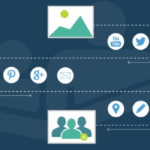Introduction
A. Definition of UX Design: This section provides a brief explanation of what User Experience Mastering (UX) Design is and its significance in the digital realm.
B. Importance of Exceptional User Experiences: Here, we emphasize the critical role of providing exceptional user experiences in today’s competitive market.
Understanding User Needs
A. Conducting User Research: Discussing the importance of gathering insights into user behavior, preferences, and pain points through research methodologies.
B. Creating User Personas: Explaining how user personas are fictional representations of target users and how they guide design decisions.
C. Analyzing User Journeys: Highlighting the significance of mapping out the user’s journey to understand their interactions with the product or service.
Designing for Usability
A. Principles of Usability: Exploring fundamental principles that contribute to creating usable interfaces.
B. Accessibility Considerations: Discussing the importance of making digital products accessible to users with disabilities.
C. Mobile Responsiveness: Addressing the necessity of designing interfaces that adapt seamlessly across various devices.
Visual Design Elements
A. Typography: Discussing the role of typography in shaping the visual hierarchy and readability of interfaces.
B. Color Theory: Exploring how color choices influence user perception and emotional response.
C. Visual Hierarchy: Highlighting the importance of organizing visual elements to guide users’ attention and interactions.
Interaction Design
A. Designing Intuitive Interfaces: Explaining the principles of interaction design aimed at creating intuitive and user-friendly interfaces.
B. User Feedback and Response: Discuss the importance of providing feedback to users’ actions and inputs.
C. Microinteractions: Exploring the significance of small, subtle interactions that enhance the overall user experience.
Testing and Iteration
A. Usability Testing Methods: Explaining various methods used to evaluate the usability of digital products.
B. Gathering and Analyzing Feedback: Discussing strategies for collecting and analyzing user feedback to inform design improvements.
C. Iterative Design Process: Highlighting the iterative nature of UX design and the continuous improvement cycle.
UX Design Tools and Resources
A. Prototyping Tools: Introducing tools used for creating prototypes to visualize and test design concepts.
B. User Testing Platforms: Exploring platforms and services that facilitate user testing and feedback collection.
C. UX Design Communities and Forums: Mentioning online communities where designers can share knowledge, seek advice, and stay updated on industry trends.
Case Studies of Successful UX Design
A. Highlighting Examples of Exceptional User Experiences: Showcasing real-world examples of products or services that excel in providing exceptional user experiences.
B. Lessons Learned from Case Studies: Extracting key lessons and insights from the featured case studies to apply in future design projects.
Conclusion
A. Recap of Key Strategies for Mastering UX Design: Summarize the main strategies and principles discussed throughout the blog post.
B. Encouragement for Implementing UX Design Principles: Encouraging readers to apply the insights gained from the blog post to their own UX design practices.















